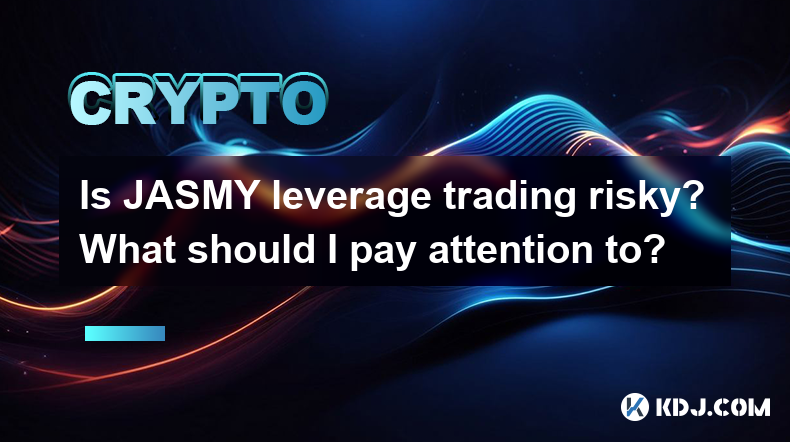-
 Bitcoin
Bitcoin $107,792.7836
-1.83% -
 Ethereum
Ethereum $2,490.3334
-3.99% -
 Tether USDt
Tether USDt $1.0003
0.00% -
 XRP
XRP $2.2177
-2.39% -
 BNB
BNB $652.5191
-1.50% -
 Solana
Solana $146.6253
-4.04% -
 USDC
USDC $1.0001
0.01% -
 TRON
TRON $0.2832
-1.14% -
 Dogecoin
Dogecoin $0.1623
-5.82% -
 Cardano
Cardano $0.5701
-5.05% -
 Hyperliquid
Hyperliquid $38.6009
-4.85% -
 Sui
Sui $2.8604
-5.95% -
 Bitcoin Cash
Bitcoin Cash $487.6897
-2.30% -
 Chainlink
Chainlink $13.0565
-5.05% -
 UNUS SED LEO
UNUS SED LEO $9.0735
0.43% -
 Avalanche
Avalanche $17.6635
-5.16% -
 Stellar
Stellar $0.2382
-2.81% -
 Toncoin
Toncoin $2.7498
-4.12% -
 Shiba Inu
Shiba Inu $0.0...01134
-4.91% -
 Litecoin
Litecoin $86.4080
-3.46% -
 Hedera
Hedera $0.1526
-4.69% -
 Monero
Monero $313.9315
-1.80% -
 Dai
Dai $1.0000
0.00% -
 Polkadot
Polkadot $3.3426
-5.85% -
 Ethena USDe
Ethena USDe $1.0001
-0.02% -
 Bitget Token
Bitget Token $4.4044
-3.80% -
 Uniswap
Uniswap $6.9000
-9.33% -
 Pepe
Pepe $0.0...09552
-5.65% -
 Aave
Aave $263.0698
-6.29% -
 Pi
Pi $0.4693
-4.76%
Is JASMY leverage trading risky? What should I pay attention to?
Leverage trading JASMY can amplify profits and losses; understand risks, set stop-losses, and choose secure exchanges like Binance or Bybit.
May 02, 2025 at 01:35 pm

Is JASMY Leverage Trading Risky? What Should I Pay Attention To?
Leverage trading in the cryptocurrency market, including trading with JASMY, can be a high-risk endeavor. Leverage allows traders to borrow funds to increase their trading position beyond what they could afford with their own capital alone. This can amplify both potential profits and losses, making it crucial for traders to understand the risks involved and the factors they should pay attention to.
Understanding Leverage and Its Risks
Leverage is essentially a loan provided by the exchange to the trader. For example, if you use 10x leverage, you can control a position worth 10 times your initial investment. While this can lead to significant gains if the market moves in your favor, it can also result in substantial losses if the market moves against you. The key risk with leverage trading is the potential for a margin call, where the exchange demands additional funds to maintain the position or closes the position if the trader cannot meet the margin requirements.
Factors to Consider Before Trading JASMY with Leverage
Before engaging in leverage trading with JASMY, it's important to consider several factors. First, assess your risk tolerance. Leverage trading is not suitable for everyone, especially those who cannot afford to lose their initial investment. Second, understand the volatility of JASMY. Cryptocurrencies can be highly volatile, and JASMY is no exception. This volatility can lead to rapid price swings that can either benefit or harm your leveraged position.
Choosing the Right Exchange for JASMY Leverage Trading
Selecting the right exchange is crucial for safe and effective leverage trading. Look for exchanges that offer robust security measures, competitive fees, and reliable customer support. Some popular exchanges for leverage trading include Binance, Bybit, and FTX. Ensure the exchange supports JASMY and offers the leverage levels you are comfortable with. It's also important to review the exchange's terms and conditions regarding leverage trading to understand any potential risks or limitations.
Setting Up a Leverage Trading Account
To start leverage trading with JASMY, you need to set up an account on a suitable exchange. Here are the steps to follow:
- Register on the exchange: Provide your personal information and complete the necessary verification processes.
- Deposit funds: Transfer the required amount of cryptocurrency or fiat currency to your exchange account.
- Enable leverage trading: Navigate to the leverage trading section of the exchange and enable it for your account.
- Set your leverage level: Choose the leverage level you want to use for your JASMY trades.
- Place your order: Use the trading interface to place a leveraged order for JASMY, specifying the amount and direction of your trade.
Managing Risk in JASMY Leverage Trading
Effective risk management is essential when trading JASMY with leverage. Set stop-loss orders to limit potential losses. A stop-loss order automatically closes your position if the price reaches a certain level, helping to prevent significant losses. Diversify your portfolio to spread risk across different assets. Monitor your positions closely, especially during periods of high volatility, and be prepared to adjust your strategy as needed.
Understanding Margin Requirements and Liquidation
Margin requirements are the minimum amount of funds you need to maintain in your account to keep your leveraged position open. If the value of your position falls below the margin requirement, you may face a margin call or liquidation. Liquidation occurs when the exchange automatically closes your position to prevent further losses. Understanding these concepts is crucial for managing your leverage trading effectively and avoiding unexpected losses.
Frequently Asked Questions
Q: Can I use leverage trading to short JASMY?
A: Yes, leverage trading allows you to take both long and short positions on JASMY. Shorting JASMY means you are betting that its price will decrease, and you can profit from this movement if you are correct.
Q: How does the leverage level affect my potential profits and losses?
A: The leverage level directly impacts the size of your position and, consequently, your potential profits and losses. Higher leverage increases both the potential gains and the potential losses, making it a double-edged sword.
Q: What happens if I cannot meet a margin call?
A: If you cannot meet a margin call, the exchange may liquidate your position to cover the losses. This means your position will be closed, and you may lose your initial investment and any borrowed funds.
Q: Are there any fees associated with leverage trading on JASMY?
A: Yes, exchanges typically charge fees for leverage trading, including trading fees, funding fees, and potential liquidation fees. It's important to understand these fees and factor them into your trading strategy.
Disclaimer:info@kdj.com
The information provided is not trading advice. kdj.com does not assume any responsibility for any investments made based on the information provided in this article. Cryptocurrencies are highly volatile and it is highly recommended that you invest with caution after thorough research!
If you believe that the content used on this website infringes your copyright, please contact us immediately (info@kdj.com) and we will delete it promptly.
- Bitcoin's Pattern Break: Are HODLers the Key to the Next Surge?
- 2025-07-04 18:50:12
- Bitcoin Price, Trump's Bill, and the $150K Dream: A NYC Take
- 2025-07-04 19:50:12
- Ethereum, LILPEPE, and the July Bounce: Will Pepe Steal ETH's Thunder?
- 2025-07-04 19:10:12
- Binance Institutional Loans: Unlocking 4x Leverage and Zero Interest for Whales
- 2025-07-04 19:15:12
- Bitcoin Bull Run: Analysts Eye Peak in Late 2025?
- 2025-07-04 19:20:13
- Pepe Indicators, Bullish Forecast: Can the Meme Coin Rally?
- 2025-07-04 19:25:12
Related knowledge

How to customize USDT TRC20 mining fees? Flexible adjustment tutorial
Jun 13,2025 at 01:42am
Understanding USDT TRC20 Mining FeesMining fees on the TRON (TRC20) network are essential for processing transactions. Unlike Bitcoin or Ethereum, where miners directly validate transactions, TRON uses a delegated proof-of-stake (DPoS) mechanism. However, users still need to pay bandwidth and energy fees, which are collectively referred to as 'mining fe...

USDT TRC20 transaction is stuck? Solution summary
Jun 14,2025 at 11:15pm
Understanding USDT TRC20 TransactionsWhen users mention that a USDT TRC20 transaction is stuck, they typically refer to a situation where the transfer of Tether (USDT) on the TRON blockchain has not been confirmed for an extended period. This issue may arise due to various reasons such as network congestion, insufficient transaction fees, or wallet-rela...

How to cancel USDT TRC20 unconfirmed transactions? Operation guide
Jun 13,2025 at 11:01pm
Understanding USDT TRC20 Unconfirmed TransactionsWhen dealing with USDT TRC20 transactions, it’s crucial to understand what an unconfirmed transaction means. An unconfirmed transaction is one that has been broadcasted to the blockchain network but hasn’t yet been included in a block. This typically occurs due to low transaction fees or network congestio...

How to check USDT TRC20 balance? Introduction to multiple query methods
Jun 21,2025 at 02:42am
Understanding USDT TRC20 and Its ImportanceUSDT (Tether) is one of the most widely used stablecoins in the cryptocurrency market. It exists on multiple blockchain networks, including TRC20, which operates on the Tron (TRX) network. Checking your USDT TRC20 balance accurately is crucial for users who hold or transact with this asset. Whether you're sendi...

What to do if USDT TRC20 transfers are congested? Speed up trading skills
Jun 13,2025 at 09:56am
Understanding USDT TRC20 Transfer CongestionWhen transferring USDT TRC20, users may occasionally experience delays or congestion. This typically occurs due to network overload on the TRON blockchain, which hosts the TRC20 version of Tether. Unlike the ERC20 variant (which runs on Ethereum), TRC20 transactions are generally faster and cheaper, but during...

The relationship between USDT TRC20 and TRON chain: technical background analysis
Jun 12,2025 at 01:28pm
What is USDT TRC20?USDT TRC20 refers to the Tether (USDT) token issued on the TRON blockchain using the TRC-20 standard. Unlike the more commonly known ERC-20 version of USDT (which runs on Ethereum), the TRC-20 variant leverages the TRON network's infrastructure for faster and cheaper transactions. The emergence of this version came as part of Tether’s...

How to customize USDT TRC20 mining fees? Flexible adjustment tutorial
Jun 13,2025 at 01:42am
Understanding USDT TRC20 Mining FeesMining fees on the TRON (TRC20) network are essential for processing transactions. Unlike Bitcoin or Ethereum, where miners directly validate transactions, TRON uses a delegated proof-of-stake (DPoS) mechanism. However, users still need to pay bandwidth and energy fees, which are collectively referred to as 'mining fe...

USDT TRC20 transaction is stuck? Solution summary
Jun 14,2025 at 11:15pm
Understanding USDT TRC20 TransactionsWhen users mention that a USDT TRC20 transaction is stuck, they typically refer to a situation where the transfer of Tether (USDT) on the TRON blockchain has not been confirmed for an extended period. This issue may arise due to various reasons such as network congestion, insufficient transaction fees, or wallet-rela...

How to cancel USDT TRC20 unconfirmed transactions? Operation guide
Jun 13,2025 at 11:01pm
Understanding USDT TRC20 Unconfirmed TransactionsWhen dealing with USDT TRC20 transactions, it’s crucial to understand what an unconfirmed transaction means. An unconfirmed transaction is one that has been broadcasted to the blockchain network but hasn’t yet been included in a block. This typically occurs due to low transaction fees or network congestio...

How to check USDT TRC20 balance? Introduction to multiple query methods
Jun 21,2025 at 02:42am
Understanding USDT TRC20 and Its ImportanceUSDT (Tether) is one of the most widely used stablecoins in the cryptocurrency market. It exists on multiple blockchain networks, including TRC20, which operates on the Tron (TRX) network. Checking your USDT TRC20 balance accurately is crucial for users who hold or transact with this asset. Whether you're sendi...

What to do if USDT TRC20 transfers are congested? Speed up trading skills
Jun 13,2025 at 09:56am
Understanding USDT TRC20 Transfer CongestionWhen transferring USDT TRC20, users may occasionally experience delays or congestion. This typically occurs due to network overload on the TRON blockchain, which hosts the TRC20 version of Tether. Unlike the ERC20 variant (which runs on Ethereum), TRC20 transactions are generally faster and cheaper, but during...

The relationship between USDT TRC20 and TRON chain: technical background analysis
Jun 12,2025 at 01:28pm
What is USDT TRC20?USDT TRC20 refers to the Tether (USDT) token issued on the TRON blockchain using the TRC-20 standard. Unlike the more commonly known ERC-20 version of USDT (which runs on Ethereum), the TRC-20 variant leverages the TRON network's infrastructure for faster and cheaper transactions. The emergence of this version came as part of Tether’s...
See all articles

























































































